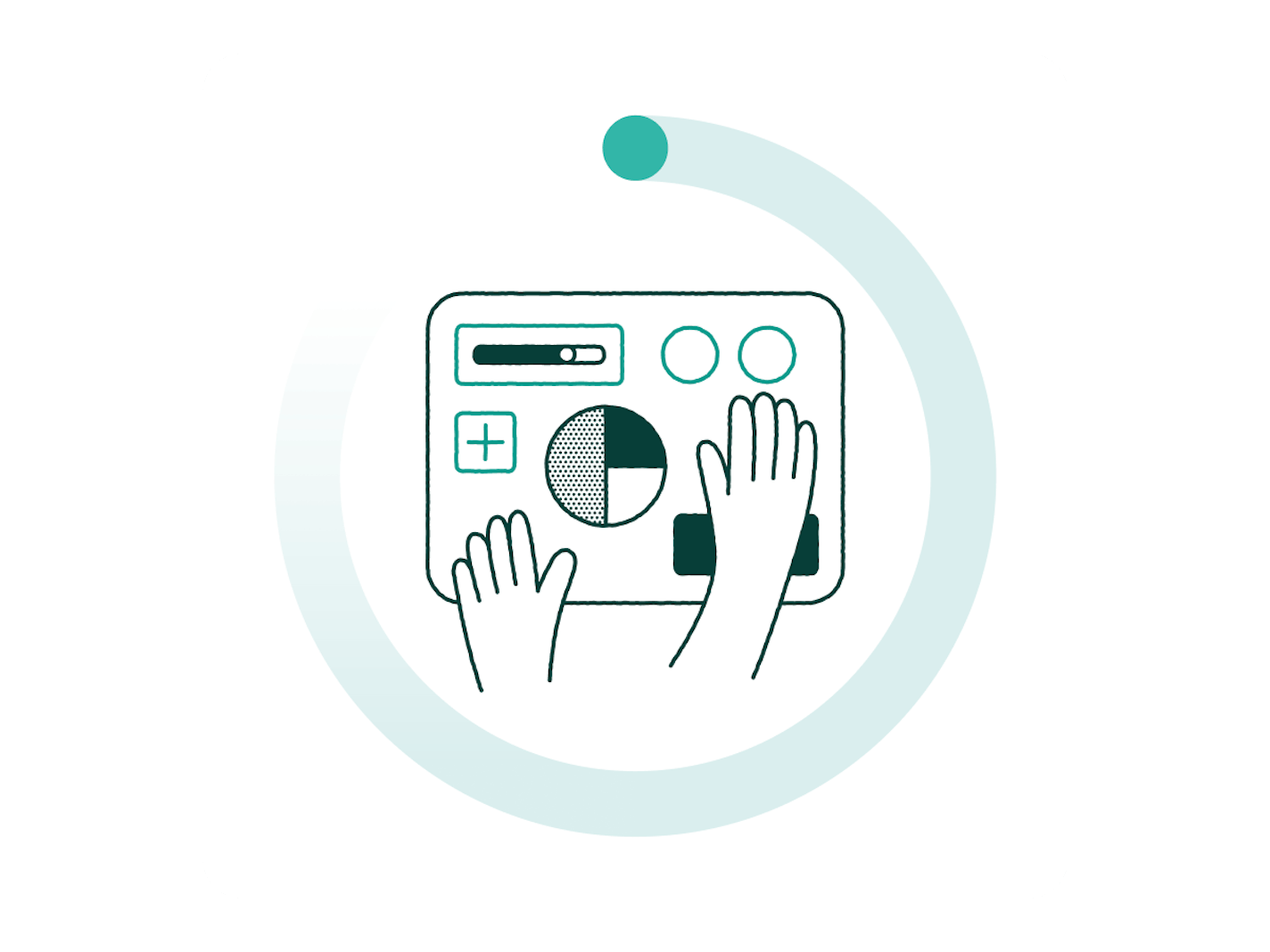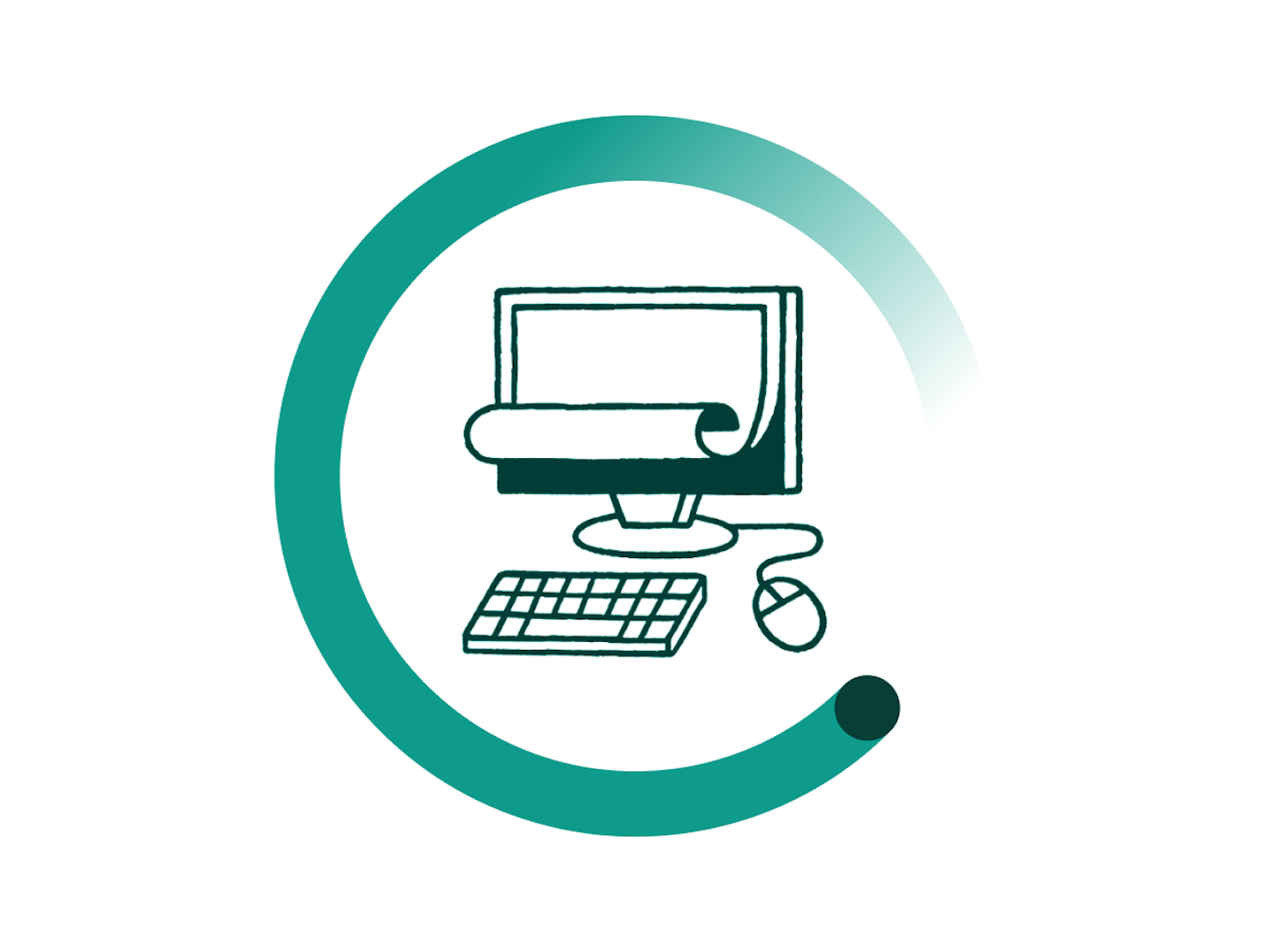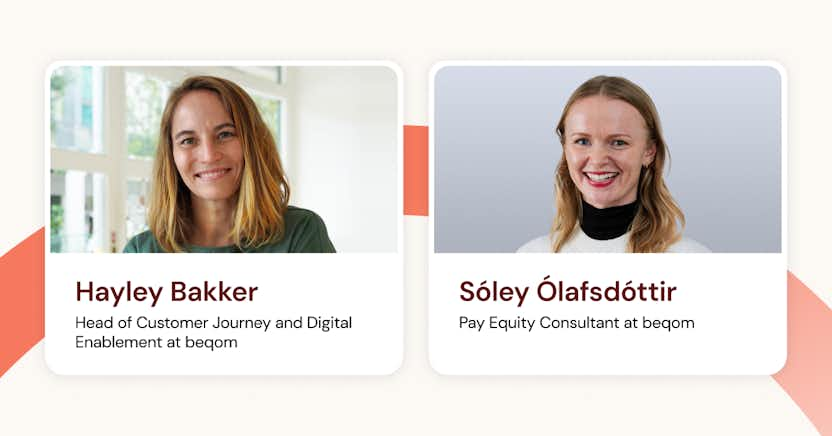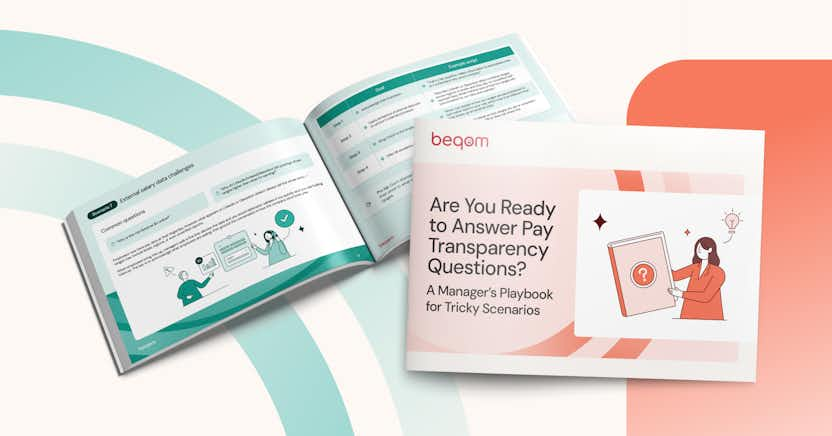The Role, Impact, and Main Examples of HR Software

HR software includes digital tools and platforms designed to simplify, support, and automate various HR functions. As job markets become increasingly competitive, remote/hybrid working models become more prevalent, and pressure builds for agile, frequent feedback, HR software beyond HRIS has shifted from being a luxury to a necessity.
From compensation and performance management to equity and workforce planning, organizations have a large selection of targeted HR software to choose from, with each option suiting specific use cases and possessing distinct benefits.
Join us to explore the benefits of utilizing HR software and discover the most effective examples that you can implement in your organization to support your HR teams.
The role of HR software in business operations
Many HR responsibilities and functions can be automated or enhanced through specialized HR software. This includes processing payrolls, tracking performance, recruiting talent, and ensuring compliance with laws and regulations.
Taking advantage of HR software is one of the key steps organizations can take to make HR more strategic and efficient. Particularly in larger enterprises, the HR ecosystem can include the combination of a core HRIS and specialized applications to address specific needs and better manage complex HR processes.
Even smaller organizations with fewer employees and reduced budgets can benefit from investing in focused software for HR teams, as it frees up valuable time for HR professionals to focus on other tasks and strategic initiatives to support the organization’s long-term growth.
The benefits of HR software
Consider investing in HR software to allow your organization to:
- Save time: HR software automates processes such as managing payrolls or tracking performance to free up resources and decrease reliance on manual input.
- Reduce costs: Helps to save costs related to compensation, retention, and recruiting, as unnecessary expenses can be swiftly identified and eliminated.
- Secure data: Utilizes advanced encryption and role-based access controls, among other security measures, to protect sensitive data and prevent unauthorized access.
- Aid decision-making: Generates real-time reports on turnover, absenteeism, and compensation trends, enabling strategic and informed workforce planning.
- Improve communication: Some HR software enhances internal communication between HR team members and facilitates self-service portals for employees to easily perform actions such as requesting leave or receiving updates.
- Minimize errors: Automates payroll calculations and tax filings, reducing errors in salary payments, deductions, and other HR processes.
- Support DEI goals: Offers analytics to improve equitable recruitment and retention efforts, helping organizations create a fair working environment and maintain a positive reputation.

HR software examples
The optimal software for HR within your organization depends on your goals, budget, workforce size, and specific needs or concerns.
We’ve outlined the top most impactful HR software, along with specific use cases and features, to help you identify the best fit for your organization.
HRIS (Human Resources Information System)
An HRIS is a software solution that helps organizations manage and streamline various HR functions, such as recruitment, employee data management, payroll, benefits administration, time and attendance tracking, and compliance.
An HRIS integrates multiple HR processes into a single platform, allowing for the automation of tasks, data analysis, and reporting to improve efficiency and decision-making in human resources management. It serves as a centralized system for storing employee information and facilitating communication between HR and other departments.
An HRIS is a software solution that helps organizations manage and streamline various HR functions, such as recruitment, employee data management, payroll, benefits administration, time and attendance tracking, and compliance. An HRIS integrates multiple HR processes into a single platform, allowing for the automation of tasks, data analysis, and reporting to improve efficiency and decision-making in human resources management. It serves as a centralized system for storing employee information and facilitating communication between HR and other departments.
For example, rather than employees independently recording working hours and data being manually entered into a time-tracking system, employees can check in through an ID card scanner or biometric reader that is synced with the HRIS. This automated, cloud-based approach prevents manual errors and allows HR to easily detect absenteeism or tardiness.
Aside from improving record-keeping, an HRIS also enables data to be safely stored in accordance with relevant data protection and privacy regulations. Since an HRIS stores a multitude of information related to employees, HR teams can also benefit from the information being centralized in a single location, enabling them to access or update data quickly.
Compensation management software
Compensation management software is designed to help organizations plan, administer, and optimize employee compensation, including salaries, bonuses, long and short term incentives, and benefits. It allows businesses to structure compensation strategies that align with company goals, maintain equity, and stay compliant with regulations.
The software often integrates with HR and payroll systems to streamline processes such as pay adjustments, budgeting, and performance-related rewards. Additionally, it provides data analytics to ensure fair pay practices, support decision-making, and track compensation trends across departments and geographies.
For example, instead of HR teams manually calculating annual salary increases via spreadsheets, compensation management software can automatically generate projections based on various factors such as performance metrics, market rates, and budget constraints. The software can also model various compensation scenarios, allowing HR to assess the impact of different bonus structures on the overall budget before any action is taken.
Through compensation management software, HR can establish competitive compensation that can lead to favorable outcomes while still adhering to financial constraints. Organizations can also benefit from the additional transparency this software provides, as it can help facilitate clear communication of compensation structures and decisions to employees, and provide the data needed for audits and compliance.
Similarly, although not necessarily used by HR teams, sales performance management software can also help optimize compensation strategies by providing real-time analytics and supporting HR teams in designing motivational and fair packages. This software enables HR to tailor comprehensive compensation plans to attract top talent, reward high performers, and encourage desirable behaviors among the workforce.
Compensation management software is designed to help organizations plan, administer, and optimize employee compensation, including salaries, bonuses, long and short term incentives, and benefits. It allows businesses to structure compensation strategies that align with company goals, maintain equity, and stay compliant with regulations. The software often integrates with HR and payroll systems to streamline processes such as pay adjustments, budgeting, and performance-related rewards. Additionally, it provides data analytics to ensure fair pay practices, support decision-making, and track compensation trends across departments and geographies.
For example, instead of HR teams manually calculating annual salary increases via spreadsheets, compensation management software can automatically generate projections based on various factors such as performance metrics, market rates, and budget constraints. The software can also model various compensation scenarios, allowing HR to assess the impact of different bonus structures on the overall budget before any action is taken.
Through compensation management software, HR can establish competitive compensation that can lead to favorable outcomes while still adhering to financial constraints. Organizations can also benefit from the additional transparency this software provides, as it can help facilitate clear communication of compensation structures and decisions to employees, and provide the data needed for audits and compliance.
Similarly, although not necessarily used by HR teams, sales performance management software can also help optimize compensation strategies by providing real-time analytics and supporting HR teams in designing motivational and fair packages. This software enables HR to tailor comprehensive compensation plans to attract top talent, reward high performers, and encourage desirable behaviors among the workforce.
Performance management software
Performance management software helps organizations monitor, assess, and improve employee performance by automating key processes like goal setting, performance reviews, feedback, and development planning.
It enables managers to set measurable objectives, track progress, and conduct appraisals, while providing employees with a clear understanding of their performance expectations. This software often includes tools for continuous feedback, coaching, and skills development, fostering a culture of ongoing improvement.
Additionally, performance management software integrates with other HR systems to align individual goals with organizational objectives and support data-driven decisions on promotions, raises, and talent development.
For example, HR can use the software to set up standardized performance metrics and provide training for managers on its use. As managers track employee progress, provide feedback, and document performances, HR oversees the process to ensure consistency and address any issues.
Between annual, biannual, or quarterly reviews, HR monitors all data input into the performance management software to identify trends and generate detailed reports to support evaluations and help plan employee development opportunities.
Performance management software enables HR teams to enhance employee engagement, reduce turnover, and align individual performance with organizational goals while fostering a culture of continuous improvement.
By providing real-time access to accurate performance metrics and feedback, it eliminates the risk of errors or outdated information associated with manual data storage. This allows HR to make data-driven, timely decisions, ensuring that performance reviews and development plans are always based on up-to-date, actionable insights.
As a result, performance management software streamlines the performance management process, facilitating smoother communication between managers and employees and driving overall productivity.
Performance management software helps organizations monitor, assess, and improve employee performance by automating key processes like goal setting, performance reviews, feedback, and development planning. The software enables managers to set measurable objectives, track progress, and conduct appraisals, while providing employees with a clear understanding of their performance expectations. It often includes tools for continuous feedback, coaching, and skills development, fostering a culture of ongoing improvement. Additionally, performance management software integrates with other HR systems to align individual goals with organizational objectives and support data-driven decisions on promotions, raises, and talent development.
For example, HR can use the software to set up standardized performance metrics and provide training for managers on its use. As managers track employee progress, provide feedback, and document performance, HR oversees the process to ensure consistency and address any issues.
Between annual, biannual, or quarterly reviews, HR monitors all data input into the performance management software to identify trends and generate detailed reports to support evaluations and help plan employee development opportunities.
Performance management software enables HR teams to enhance employee engagement, reduce turnover, and align individual performance with organizational goals while fostering a culture of continuous improvement.
By providing real-time access to accurate performance metrics and feedback, it eliminates the risk of errors or outdated information associated with manual data storage. This allows HR to make data-driven, timely decisions, ensuring that performance reviews and development plans are always based on up-to-date, actionable insights. The software streamlines the performance management process, facilitating smoother communication between managers and employees and driving overall productivity.
Pay equity software
Pay equity software helps HR teams resolve pay inequities by identifying unjust salary disparities and increasing transparency within organizations.
Pay inequity can arise from outdated compensation practices or unconscious biases, which can lead to unfair pay gaps between employees performing similar roles or having comparable experience and skills. Pay equity software helps HR identify these disparities and facilitates appropriate adjustments.
For example, with this software, HR can analyze compensation rates against factors like employee genders, ethnicities, job roles, skills, and performance to pinpoint and report on unjustified pay gaps. With extensive insights, HR can make data-driven decisions to adjust pay structures, ensuring fair and equitable compensation.
Pay equity software helps organizations meet legal requirements such as the Equal Pay Act or EU Pay Transparency Directive to prevent legal challenges and preserve a positive reputation. Through detailed reports, this software also provides additional visibility into the organization’s pay practices, which enables HR teams to accurately monitor and address potential pay disparities before they negatively impact employee satisfaction and performance.
Other examples of human resource application software
There are additional human resource application software solutions that businesses can implement to support HR processes, including: ,
Workforce planning
Workforce planning software facilitates the analysis and organization of workforce supply and demand.
Workforce planning allows HR teams to predict labor requirements based on factors such as business growth, turnover rates, and economic trends. By using workforce planning tools, organizations evaluate skills, roles, and positions to identify talent gaps and anticipate staffing needs to help avoid issues such as talent shortages or overstaffing.
Applicant tracking systems (ATS)
Applicant tracking systems manage recruiting by organizing candidate information and tracking their progress in the hiring process.
An ATS provides a centralized platform for HR to store and organize candidate information while automating administrative tasks. This allows HR teams to effectively distribute job postings to multiple job boards, easily manage emails and messages with candidates, and seamlessly collaborate with hiring managers, resulting in a more effective and transparent hiring process.
Talent management
Talent management software enables the effective management of talent resources by assessing talent and guiding promotion or termination decisions.
Talent management software integrates various HR processes such as performance management, succession planning, and compensation management. These processes help businesses identify top performers through reviews and feedback, guide compensation decisions, and facilitate accurate talent reviews, allowing businesses to retain valuable employees, plan new performance incentive programs, and support their workforce’s continued contributions.

Improve HR efficiency, accuracy, and compliance with beqom’s industry-leading HR software
If you believe the HR software we’ve discussed could support your human resource teams and facilitate favorable organizational outcomes, consider implementing them in your HR Technology Stack for 2024.
beqom’s sophisticated HR software management solutions are designed to enhance HR efficiency, ensure accuracy in compensation and performance management, and help maintain compliance with data privacy and equal pay regulations.
Explore beqom’s software solutions today to take a step towards effective HR management, streamlined processes, and improved organizational outcomes.







